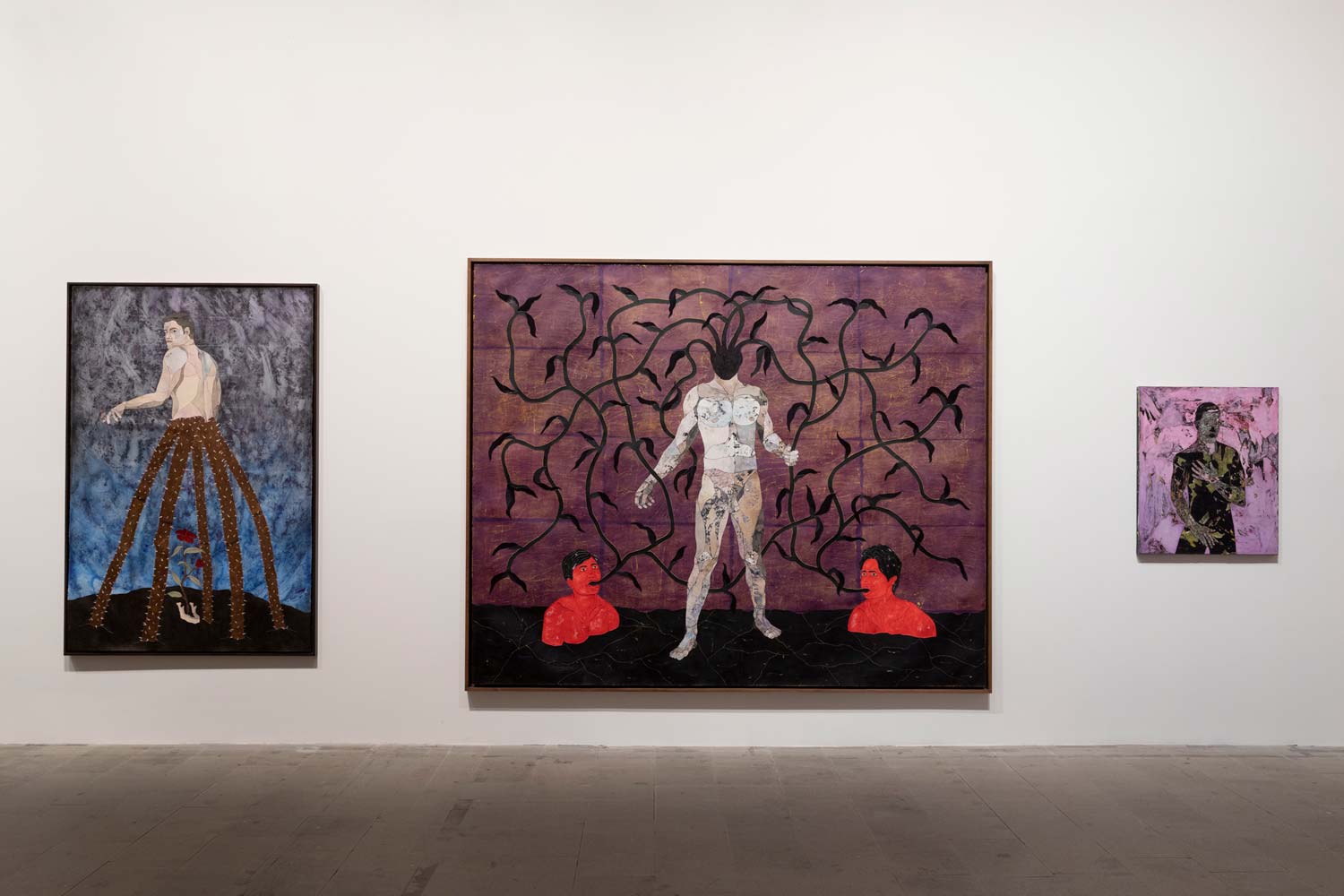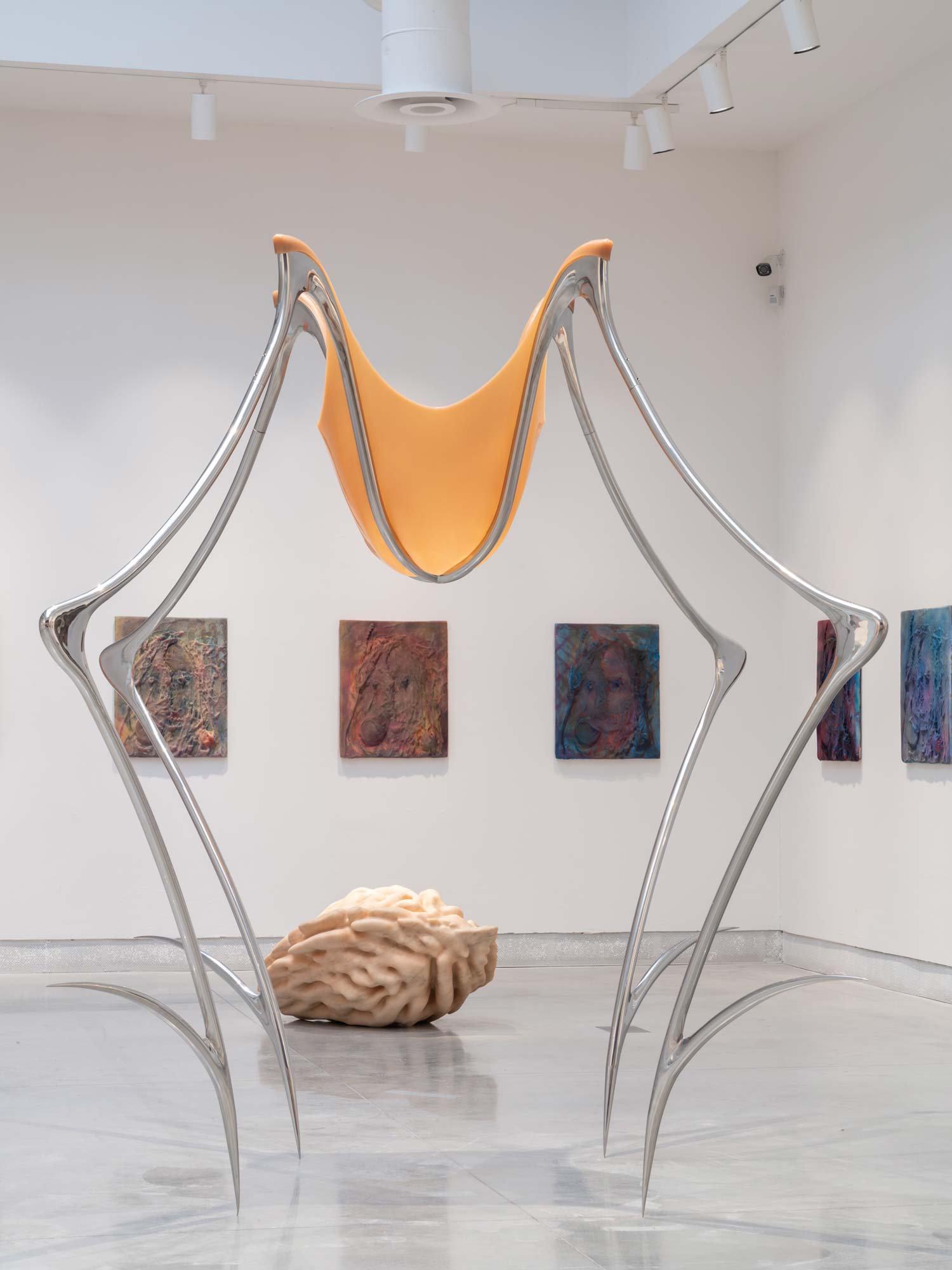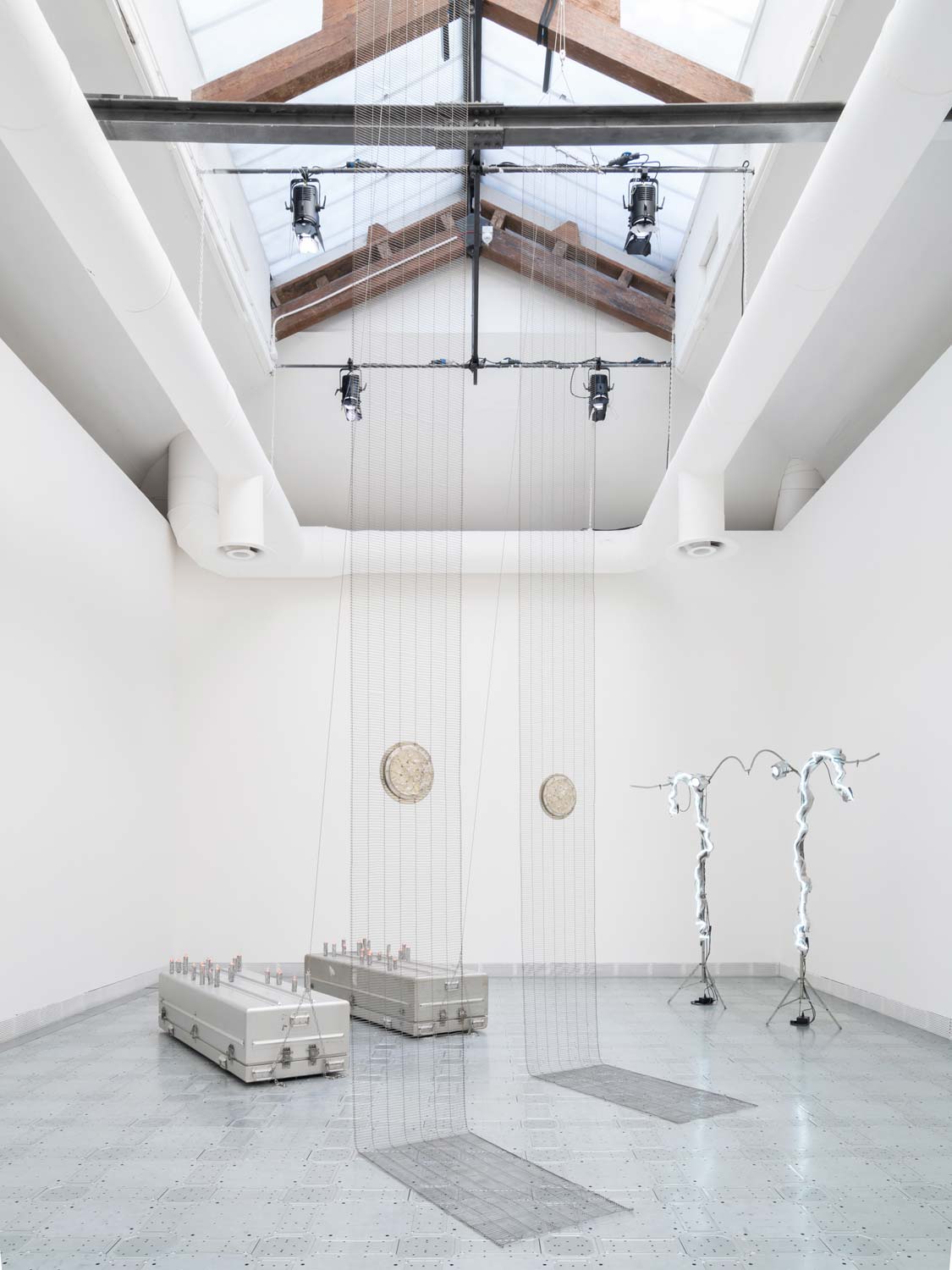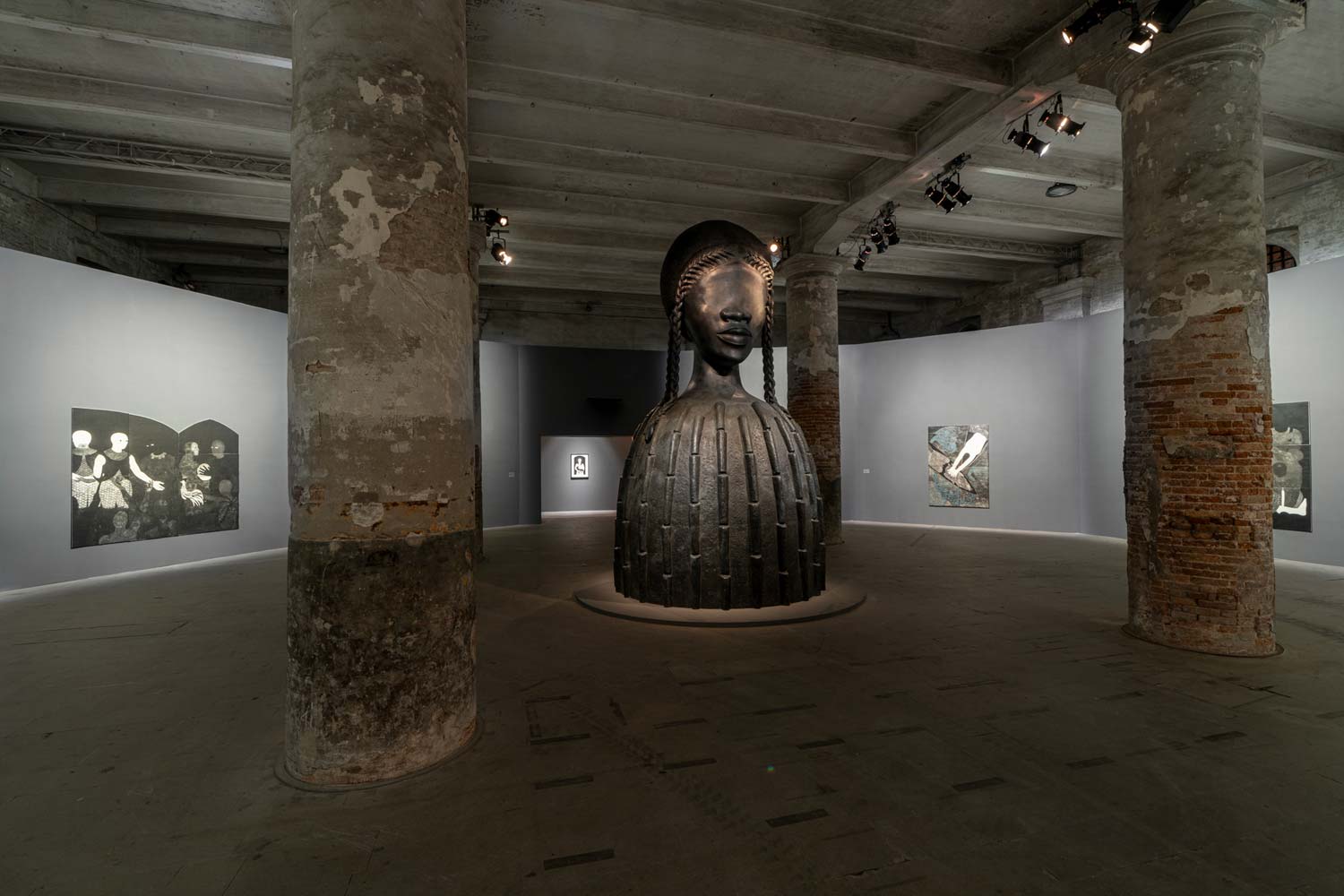“I open myself against my will by dreaming of other planets. I dream of other ways of seeing this life.” This phrase by Mexican, U.S.-transplanted Felipe Baeza, placed in the exergue of the brief synopsis of one of the works on display at the Arsenale, is one of the possible keys to approach this year’s Venice Biennale. I say possible because Cecilia Alemani’s concept for The Milk of Dreams, the title of this edition, is complex and simple, varied and single-minded, mammoth, in its extension, and encompassing.
I use all these adjectives in contradiction, because a common thread to deal with a complex exhibition machine such as the Biennale is, one has to find it, and this is as valid for insiders as it is and, even more so, for an audience of non-insiders who, in various capacities, flock to an event of such magnitude, animating, in the months of its duration, the lagoon city. I try then to mediate between the two positions, to take a side-step between the more trained eye of an art historian and the less well-equipped, no less important eye of a visitor, be he or she simply a curious, when not an enthusiast or devotee of the visual arts.
The prominence that contemporary art has achieved for more than a few decades now, compared to its ’late’ emergence, on a national as well as international scale, and, as a consequence, the proliferation of exhibitions that accompany it, has certainly not solved the difficulty of approaching it, of penetrating its languages and experimentations, at least since the second half of the twentieth century. Numerous examples could be recalled in this regard, even to extrapolate the Venetian event alone. Valid are the somewhat more recent editions, from the 2011 edition curated by Bige Curiger, entitled Illuminazioni, in which, emblematically, the curator herself asked, “What is a Biennale? What audience can it rely on? What is the role of the curator?” to the 2013 edition curated by Massimiliano Gioni where the common thread of the project, starting from the central setting of that Encyclopedic Palace, container of all the achievements of humanity, pushed to highlight the contradictions inherent to the art system, but also to the concept of art itself. A position from which Okwui Enwezor distanced himself in 2015, who, against Gioni’s choices of expanded inclusiveness, brought back the emphasis on an academic, not to say imperialist, perspective through which he questioned the relationship between art and reality, social and political above all, not to mention the penultimate 2019 curated by Ralph Rugoff: with the title My You Live In Interesting Times, the latter directed attention, in a dimension less expansive numerically (79 artists versus the far more mighty numbers, over hundreds, of the others), to the role, not decisive, but critical and alternative of art.





That the latter, its definition, its value, in relation also to its transformation in a system that has become increasingly complex and in which a preeminent role is entrusted to the curator, remains the problematic knot for dealing with an exhibition, is beyond doubt. Cecilia Alemani’s exhibition, with its 213 artists from 58 nations, with a female presence never before seen, points the eye to the changes, beyond all expectations, of our world and humanity, entrusting a key to the imaginative condition of art.
Beginning with Leonora Carrington’s book of fairy tales of the same name, intended for the title of this appointment, the questions posed by the curator follow one another. “How is the definition of human changing? What are the differences that separate the plant, the animal, the human and the non-human? What are our responsibilities to our fellow human beings, to other life forms, and to the planet we inhabit? And what would life be like without us?” These are questions of no small importance that have produced an interminable succession of artists present between the Central Pavilion and the Arsenale, many of them unknown to the general public and beyond, with whom, admittedly, one struggles a bit to live with as one moves from the monumental spectacularity of some works to the minimal register of others to the documentary. The latter is the case with the five “capsules” conceived as thematic lunges, transversal pages devoted to a more or less proximate history of art. Breaks, one might say them, less deafening, dictated by the need to establish links with a past, even a lesser known one, welcomed with a fluid gaze, distant from traditional exhibition methodologies.
How to move or how to prepare? I have no precise solutions, but trying to understand the project I think is the necessary first step. This one by Cecilia Alemani has its own legibility, consistent in some ways, even there where oversized. To ask where our world is going, what we are responsible for with respect to the emergencies before our eyes, to doubt a millenarian anthropocentrism in order to oppose new, hybridized possibilities of survival between species or between nature and artifice, seems legitimate. Less responsive to its objective is to subject the eye to dilate beyond measure in the effort to contain the many stresses that tell us of anatomically mangled bodies, of transformed identities, of metamorphoses bordering on wonder.
All entrusted to many forms of expression, from the most traditional, and prevalent, painting, to combinations of the most varied materials, often encroaching on effects of decoration, to the presence of actual plastic bodies and installations. There is, of course, no shortage of evidence of interest: I am thinking in particular of the plastic language in such tests as those of the Canadian Elaine Cameron-Weir, the German Julia Phillips, and the Americans Hannah Levy and Simone Leigh, the latter in an ’ordering’ and architectural dimension. These are therefore value judgments beyond the scope of what is required here, although once the project has been acquired, I believe that confrontation with the work is the essential second step.
Its repositioning at the center of our attention, the decoding of language and content, out of strategies and systems, according to a personal sensibility, never unambiguous and assertive, remains the most valid criterion. I have seen children stooping in curiosity, not fear, over the wax transhuman bodies, more real than real, in thealarming setting of Uffe Isolotto in the Danish pavilion, or young people wondering about the sense of waiting, from destruction to memorial rebirth, orchestrated by Latifa Echakhch in the Swiss pavilion, or visitors captivated by the beautiful films, full of joy and hope, with which Francis AlÓ±s investigates even the most conflicting realities in the Belgian one. If a Biennial and the art that expresses it can have meaning in our own lives, times and perspectives, focusing on the works themselves, capturing their needs as part of our own needs, I believe is the best approach.
This contribution was originally published in No. 14 of our printmagazine Finestre Sull’Arte Magazine.Click here to subscribe.
Warning: the translation into English of the original Italian article was created using automatic tools. We undertake to review all articles, but we do not guarantee the total absence of inaccuracies in the translation due to the program. You can find the original by clicking on the ITA button. If you find any mistake,please contact us.